Organizational Culture and Employee Motivation Study
VerifiedAdded on 2023/01/04
|89
|19255
|82
Report
AI Summary
This report investigates the effects of organizational culture on employee motivation, focusing on Beck's Brewery. The study employs a quantitative approach, analyzing the relationship between organizational culture and employee performance. It begins with an introduction to the concept of organizational culture and its impact on employee motivation, followed by a literature review exploring relevant theories and concepts. The research methodology section details the quantitative research design, data collection methods (questionnaires from 15 employees), and data analysis techniques. Findings reveal that employees generally perceive Beck's Brewery's culture positively, leading to increased motivation. Statistical analysis confirms a relationship between organizational culture and employee performance, supporting the alternative hypothesis. The report concludes with a discussion of the findings, recommendations for improving organizational culture, and suggestions for future research. The study highlights the importance of a positive work environment in achieving organizational goals and enhancing employee satisfaction and retention.
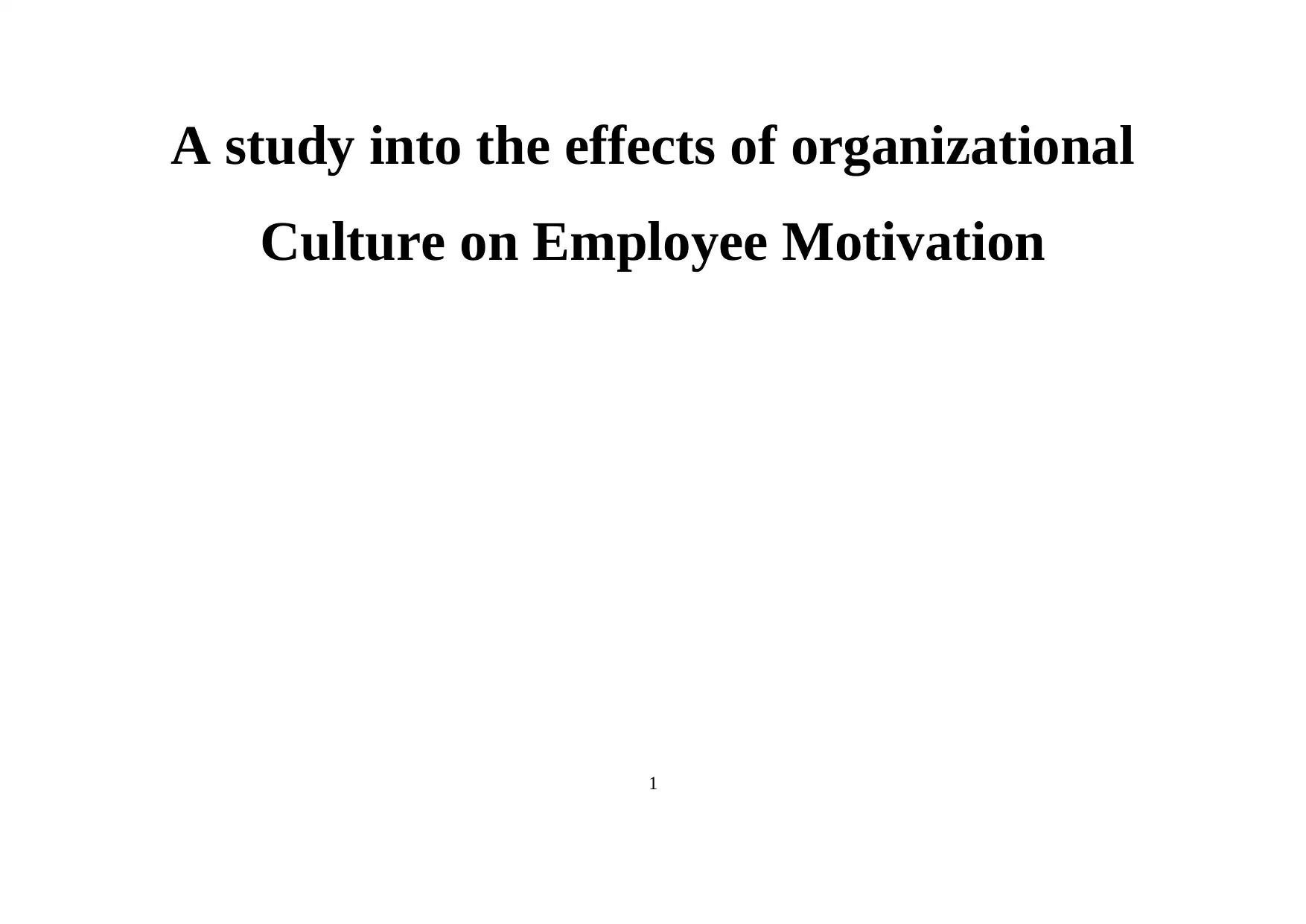
A study into the effects of organizational
Culture on Employee Motivation
1
Culture on Employee Motivation
1
Paraphrase This Document
Need a fresh take? Get an instant paraphrase of this document with our AI Paraphraser
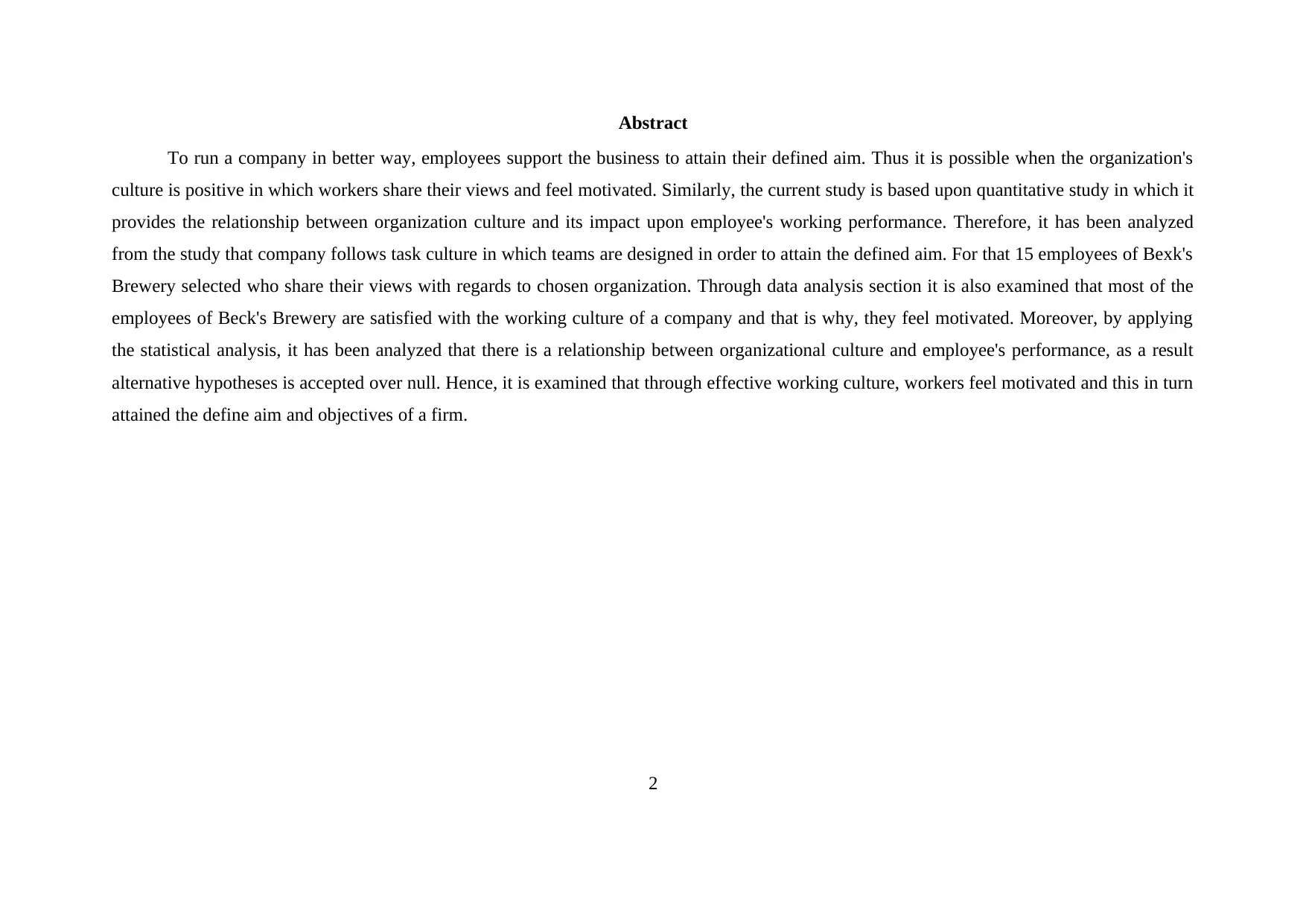
Abstract
To run a company in better way, employees support the business to attain their defined aim. Thus it is possible when the organization's
culture is positive in which workers share their views and feel motivated. Similarly, the current study is based upon quantitative study in which it
provides the relationship between organization culture and its impact upon employee's working performance. Therefore, it has been analyzed
from the study that company follows task culture in which teams are designed in order to attain the defined aim. For that 15 employees of Bexk's
Brewery selected who share their views with regards to chosen organization. Through data analysis section it is also examined that most of the
employees of Beck's Brewery are satisfied with the working culture of a company and that is why, they feel motivated. Moreover, by applying
the statistical analysis, it has been analyzed that there is a relationship between organizational culture and employee's performance, as a result
alternative hypotheses is accepted over null. Hence, it is examined that through effective working culture, workers feel motivated and this in turn
attained the define aim and objectives of a firm.
2
To run a company in better way, employees support the business to attain their defined aim. Thus it is possible when the organization's
culture is positive in which workers share their views and feel motivated. Similarly, the current study is based upon quantitative study in which it
provides the relationship between organization culture and its impact upon employee's working performance. Therefore, it has been analyzed
from the study that company follows task culture in which teams are designed in order to attain the defined aim. For that 15 employees of Bexk's
Brewery selected who share their views with regards to chosen organization. Through data analysis section it is also examined that most of the
employees of Beck's Brewery are satisfied with the working culture of a company and that is why, they feel motivated. Moreover, by applying
the statistical analysis, it has been analyzed that there is a relationship between organizational culture and employee's performance, as a result
alternative hypotheses is accepted over null. Hence, it is examined that through effective working culture, workers feel motivated and this in turn
attained the define aim and objectives of a firm.
2
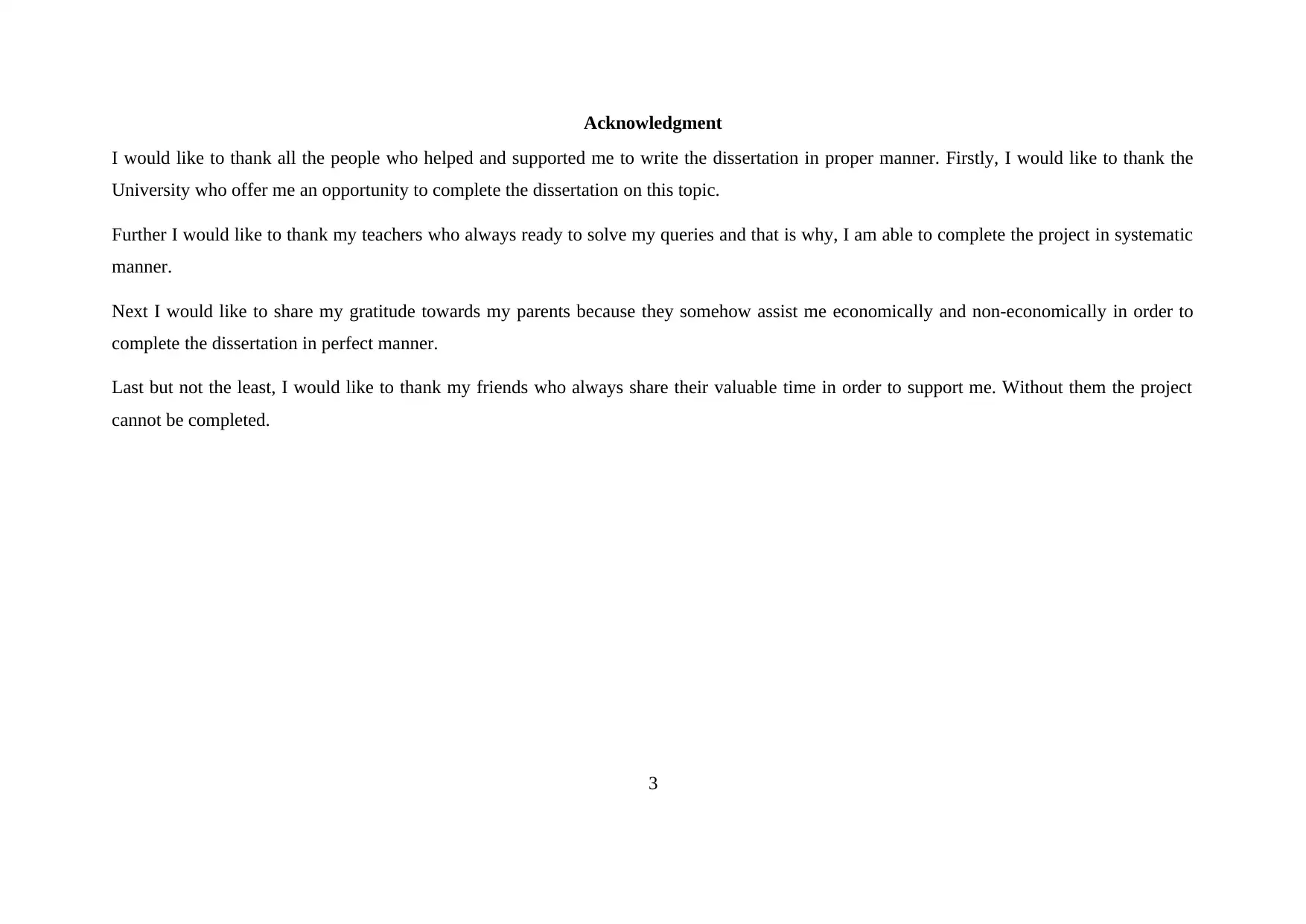
Acknowledgment
I would like to thank all the people who helped and supported me to write the dissertation in proper manner. Firstly, I would like to thank the
University who offer me an opportunity to complete the dissertation on this topic.
Further I would like to thank my teachers who always ready to solve my queries and that is why, I am able to complete the project in systematic
manner.
Next I would like to share my gratitude towards my parents because they somehow assist me economically and non-economically in order to
complete the dissertation in perfect manner.
Last but not the least, I would like to thank my friends who always share their valuable time in order to support me. Without them the project
cannot be completed.
3
I would like to thank all the people who helped and supported me to write the dissertation in proper manner. Firstly, I would like to thank the
University who offer me an opportunity to complete the dissertation on this topic.
Further I would like to thank my teachers who always ready to solve my queries and that is why, I am able to complete the project in systematic
manner.
Next I would like to share my gratitude towards my parents because they somehow assist me economically and non-economically in order to
complete the dissertation in perfect manner.
Last but not the least, I would like to thank my friends who always share their valuable time in order to support me. Without them the project
cannot be completed.
3
⊘ This is a preview!⊘
Do you want full access?
Subscribe today to unlock all pages.

Trusted by 1+ million students worldwide
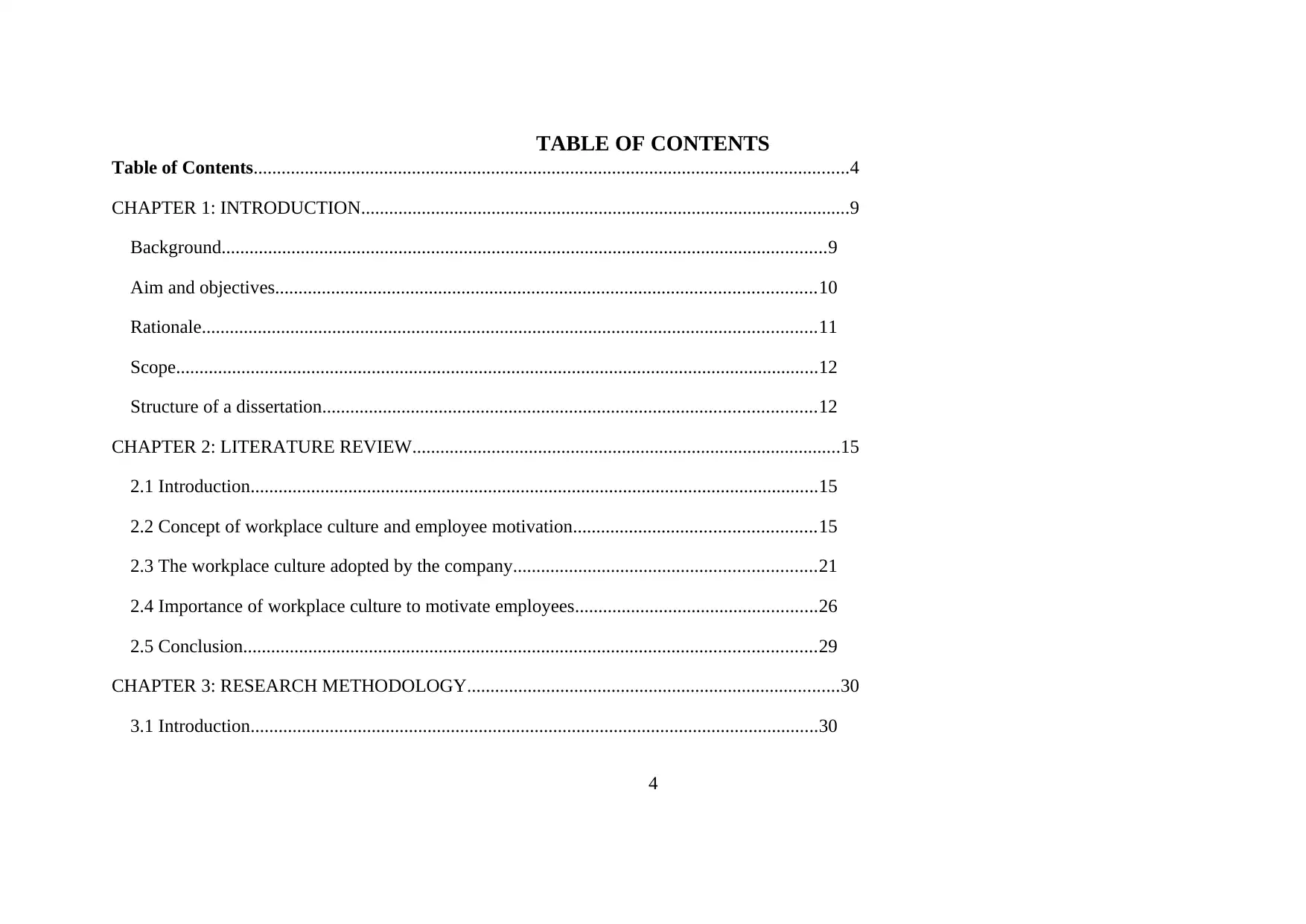
TABLE OF CONTENTS
Table of Contents................................................................................................................................4
CHAPTER 1: INTRODUCTION.........................................................................................................9
Background..................................................................................................................................9
Aim and objectives....................................................................................................................10
Rationale....................................................................................................................................11
Scope..........................................................................................................................................12
Structure of a dissertation..........................................................................................................12
CHAPTER 2: LITERATURE REVIEW............................................................................................15
2.1 Introduction..........................................................................................................................15
2.2 Concept of workplace culture and employee motivation....................................................15
2.3 The workplace culture adopted by the company.................................................................21
2.4 Importance of workplace culture to motivate employees....................................................26
2.5 Conclusion...........................................................................................................................29
CHAPTER 3: RESEARCH METHODOLOGY................................................................................30
3.1 Introduction..........................................................................................................................30
4
Table of Contents................................................................................................................................4
CHAPTER 1: INTRODUCTION.........................................................................................................9
Background..................................................................................................................................9
Aim and objectives....................................................................................................................10
Rationale....................................................................................................................................11
Scope..........................................................................................................................................12
Structure of a dissertation..........................................................................................................12
CHAPTER 2: LITERATURE REVIEW............................................................................................15
2.1 Introduction..........................................................................................................................15
2.2 Concept of workplace culture and employee motivation....................................................15
2.3 The workplace culture adopted by the company.................................................................21
2.4 Importance of workplace culture to motivate employees....................................................26
2.5 Conclusion...........................................................................................................................29
CHAPTER 3: RESEARCH METHODOLOGY................................................................................30
3.1 Introduction..........................................................................................................................30
4
Paraphrase This Document
Need a fresh take? Get an instant paraphrase of this document with our AI Paraphraser
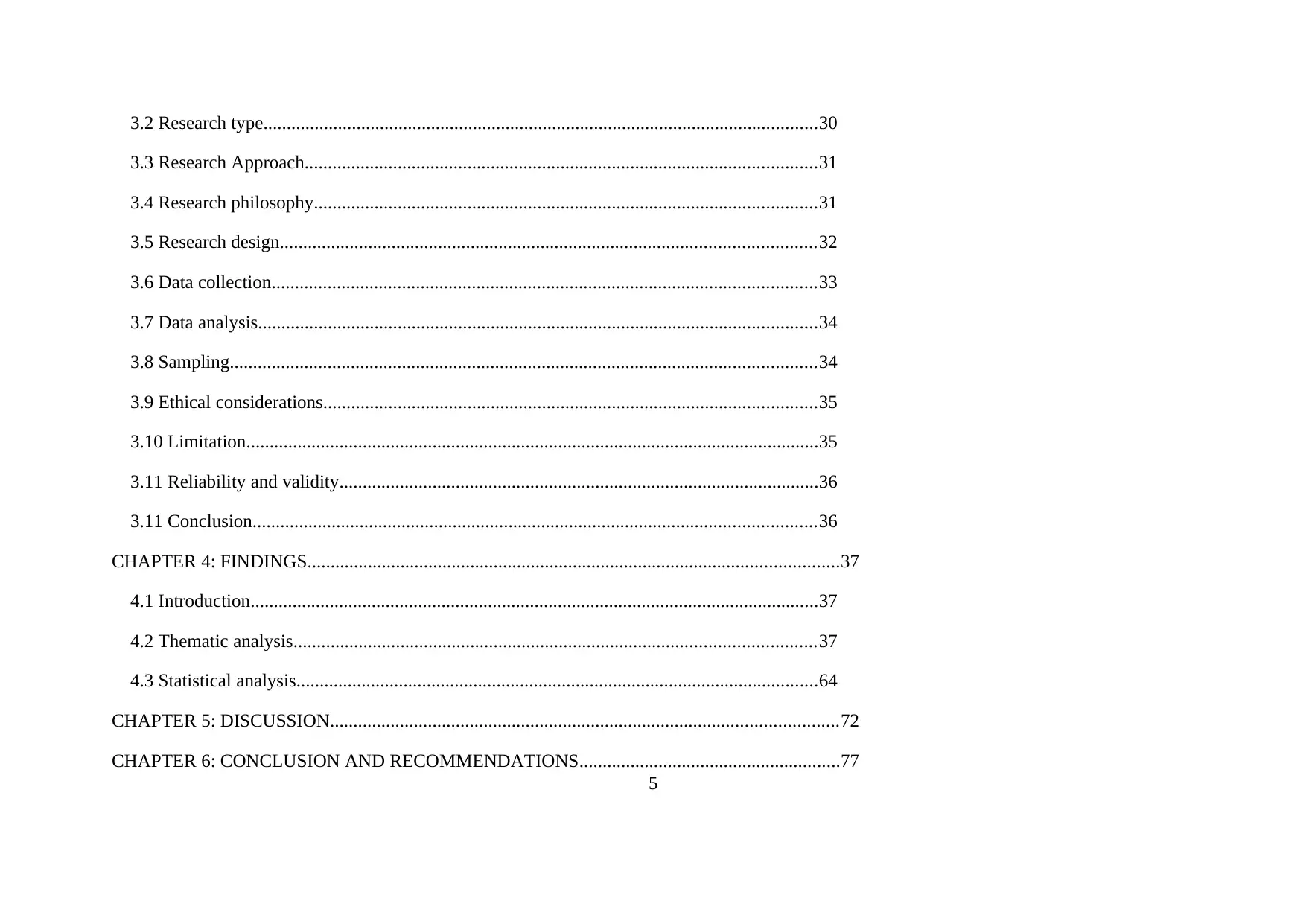
3.2 Research type.......................................................................................................................30
3.3 Research Approach..............................................................................................................31
3.4 Research philosophy............................................................................................................31
3.5 Research design...................................................................................................................32
3.6 Data collection.....................................................................................................................33
3.7 Data analysis........................................................................................................................34
3.8 Sampling..............................................................................................................................34
3.9 Ethical considerations..........................................................................................................35
3.10 Limitation...........................................................................................................................35
3.11 Reliability and validity.......................................................................................................36
3.11 Conclusion.........................................................................................................................36
CHAPTER 4: FINDINGS..................................................................................................................37
4.1 Introduction..........................................................................................................................37
4.2 Thematic analysis................................................................................................................37
4.3 Statistical analysis................................................................................................................64
CHAPTER 5: DISCUSSION.............................................................................................................72
CHAPTER 6: CONCLUSION AND RECOMMENDATIONS........................................................77
5
3.3 Research Approach..............................................................................................................31
3.4 Research philosophy............................................................................................................31
3.5 Research design...................................................................................................................32
3.6 Data collection.....................................................................................................................33
3.7 Data analysis........................................................................................................................34
3.8 Sampling..............................................................................................................................34
3.9 Ethical considerations..........................................................................................................35
3.10 Limitation...........................................................................................................................35
3.11 Reliability and validity.......................................................................................................36
3.11 Conclusion.........................................................................................................................36
CHAPTER 4: FINDINGS..................................................................................................................37
4.1 Introduction..........................................................................................................................37
4.2 Thematic analysis................................................................................................................37
4.3 Statistical analysis................................................................................................................64
CHAPTER 5: DISCUSSION.............................................................................................................72
CHAPTER 6: CONCLUSION AND RECOMMENDATIONS........................................................77
5
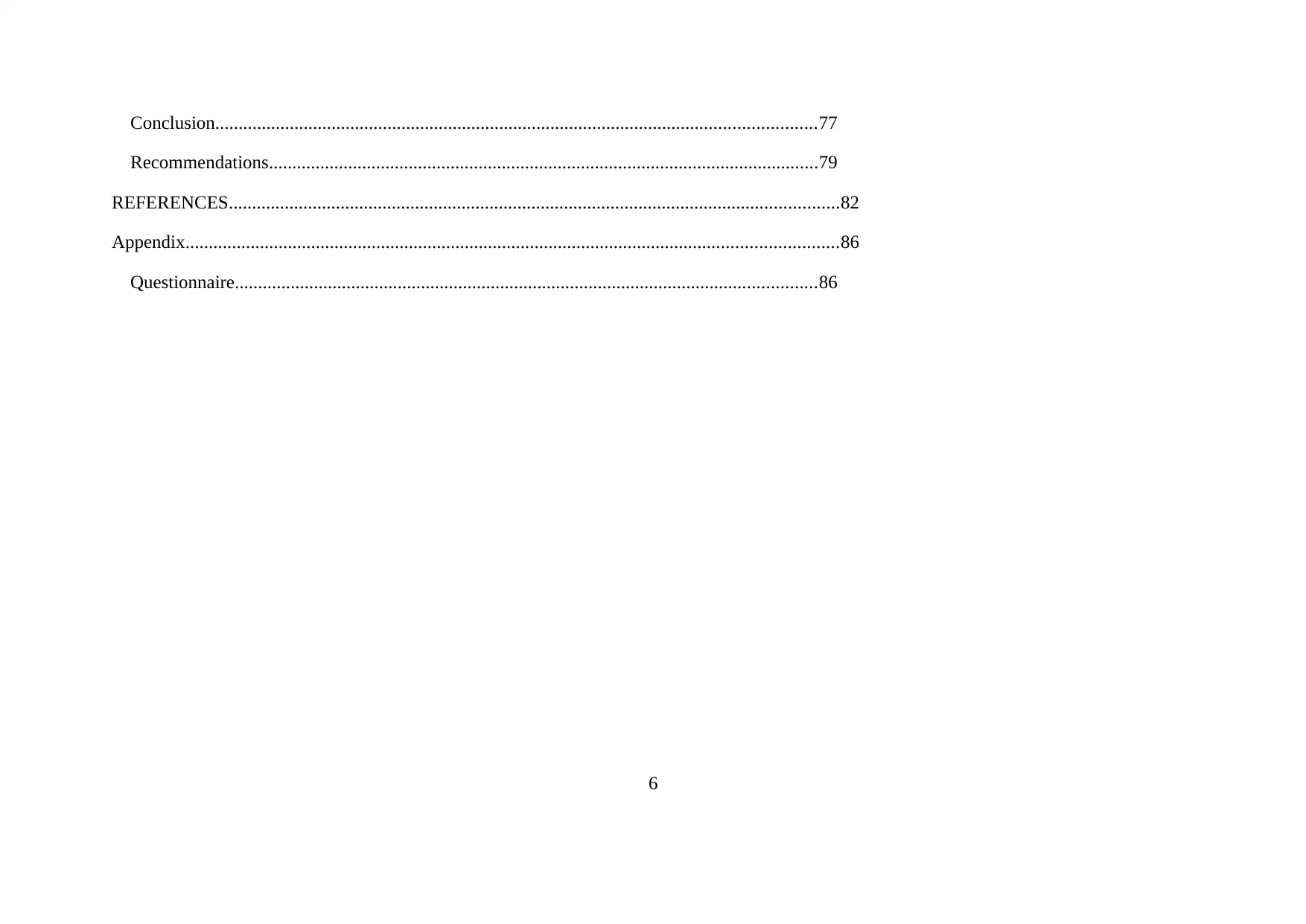
Conclusion.................................................................................................................................77
Recommendations......................................................................................................................79
REFERENCES...................................................................................................................................82
Appendix............................................................................................................................................86
Questionnaire.............................................................................................................................86
6
Recommendations......................................................................................................................79
REFERENCES...................................................................................................................................82
Appendix............................................................................................................................................86
Questionnaire.............................................................................................................................86
6
⊘ This is a preview!⊘
Do you want full access?
Subscribe today to unlock all pages.

Trusted by 1+ million students worldwide
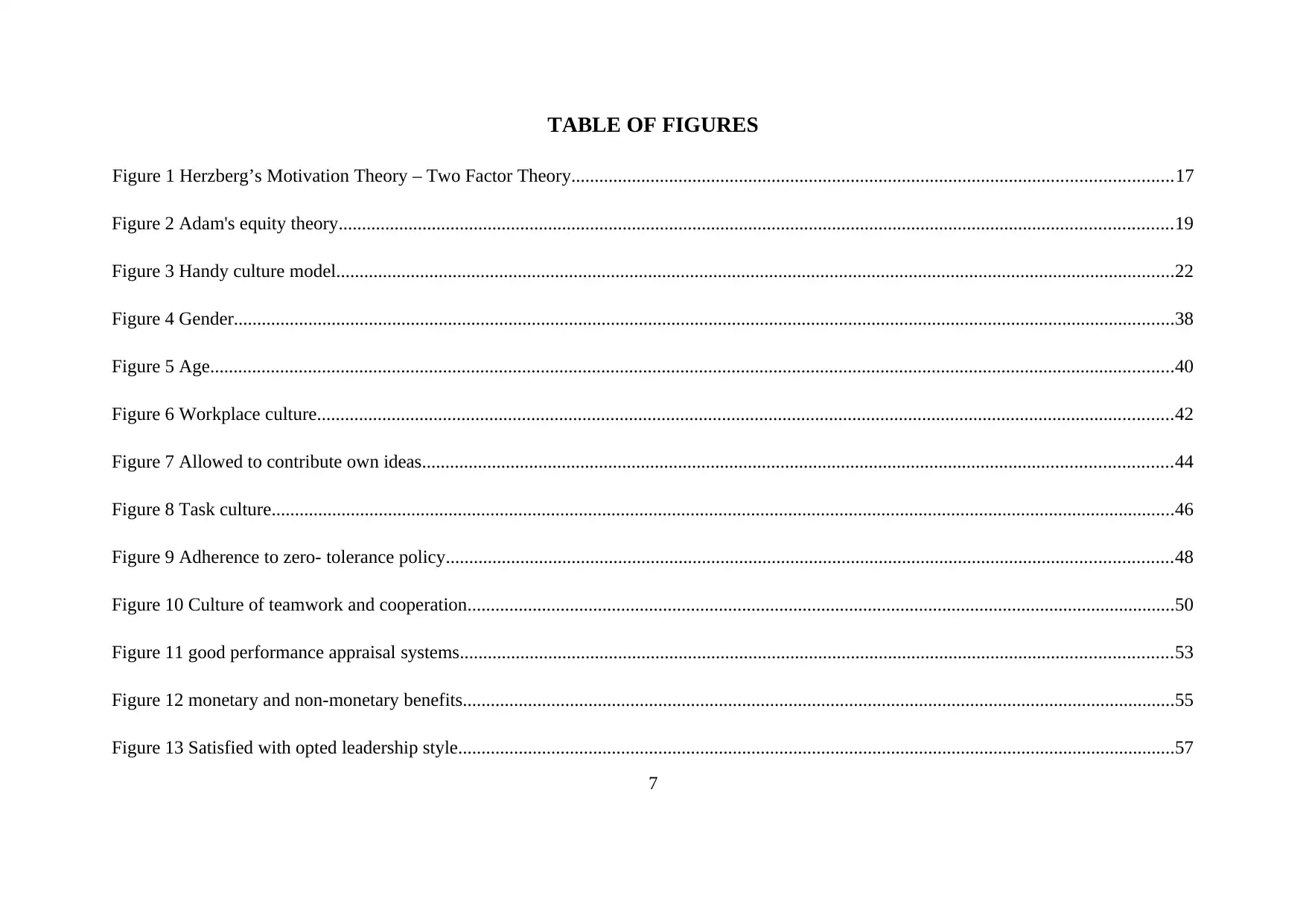
TABLE OF FIGURES
Figure 1 Herzberg’s Motivation Theory – Two Factor Theory.................................................................................................................................17
Figure 2 Adam's equity theory...................................................................................................................................................................................19
Figure 3 Handy culture model....................................................................................................................................................................................22
Figure 4 Gender..........................................................................................................................................................................................................38
Figure 5 Age...............................................................................................................................................................................................................40
Figure 6 Workplace culture........................................................................................................................................................................................42
Figure 7 Allowed to contribute own ideas.................................................................................................................................................................44
Figure 8 Task culture..................................................................................................................................................................................................46
Figure 9 Adherence to zero- tolerance policy............................................................................................................................................................48
Figure 10 Culture of teamwork and cooperation........................................................................................................................................................50
Figure 11 good performance appraisal systems.........................................................................................................................................................53
Figure 12 monetary and non-monetary benefits.........................................................................................................................................................55
Figure 13 Satisfied with opted leadership style..........................................................................................................................................................57
7
Figure 1 Herzberg’s Motivation Theory – Two Factor Theory.................................................................................................................................17
Figure 2 Adam's equity theory...................................................................................................................................................................................19
Figure 3 Handy culture model....................................................................................................................................................................................22
Figure 4 Gender..........................................................................................................................................................................................................38
Figure 5 Age...............................................................................................................................................................................................................40
Figure 6 Workplace culture........................................................................................................................................................................................42
Figure 7 Allowed to contribute own ideas.................................................................................................................................................................44
Figure 8 Task culture..................................................................................................................................................................................................46
Figure 9 Adherence to zero- tolerance policy............................................................................................................................................................48
Figure 10 Culture of teamwork and cooperation........................................................................................................................................................50
Figure 11 good performance appraisal systems.........................................................................................................................................................53
Figure 12 monetary and non-monetary benefits.........................................................................................................................................................55
Figure 13 Satisfied with opted leadership style..........................................................................................................................................................57
7
Paraphrase This Document
Need a fresh take? Get an instant paraphrase of this document with our AI Paraphraser
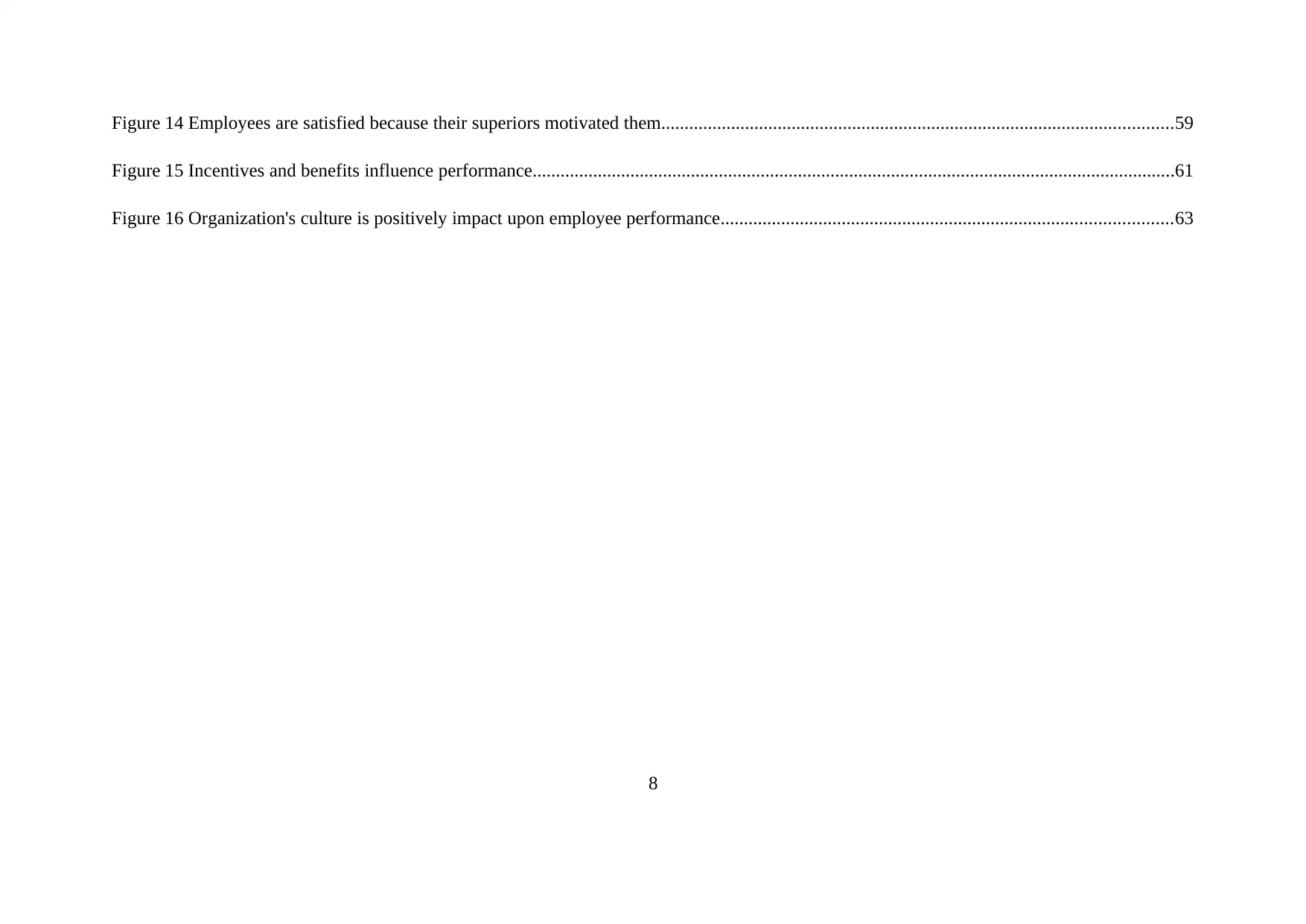
Figure 14 Employees are satisfied because their superiors motivated them..............................................................................................................59
Figure 15 Incentives and benefits influence performance..........................................................................................................................................61
Figure 16 Organization's culture is positively impact upon employee performance.................................................................................................63
8
Figure 15 Incentives and benefits influence performance..........................................................................................................................................61
Figure 16 Organization's culture is positively impact upon employee performance.................................................................................................63
8
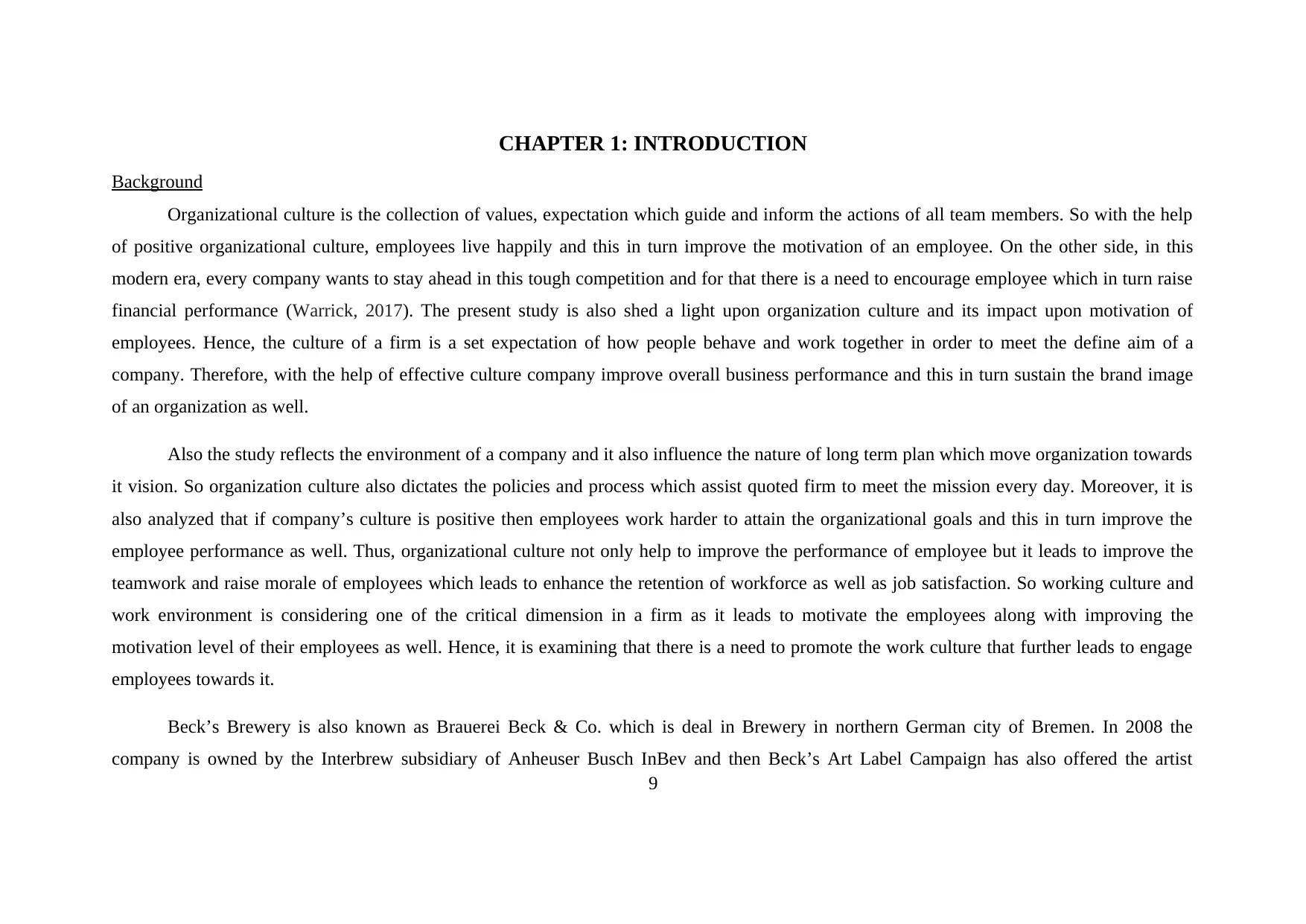
CHAPTER 1: INTRODUCTION
Background
Organizational culture is the collection of values, expectation which guide and inform the actions of all team members. So with the help
of positive organizational culture, employees live happily and this in turn improve the motivation of an employee. On the other side, in this
modern era, every company wants to stay ahead in this tough competition and for that there is a need to encourage employee which in turn raise
financial performance (Warrick, 2017). The present study is also shed a light upon organization culture and its impact upon motivation of
employees. Hence, the culture of a firm is a set expectation of how people behave and work together in order to meet the define aim of a
company. Therefore, with the help of effective culture company improve overall business performance and this in turn sustain the brand image
of an organization as well.
Also the study reflects the environment of a company and it also influence the nature of long term plan which move organization towards
it vision. So organization culture also dictates the policies and process which assist quoted firm to meet the mission every day. Moreover, it is
also analyzed that if company’s culture is positive then employees work harder to attain the organizational goals and this in turn improve the
employee performance as well. Thus, organizational culture not only help to improve the performance of employee but it leads to improve the
teamwork and raise morale of employees which leads to enhance the retention of workforce as well as job satisfaction. So working culture and
work environment is considering one of the critical dimension in a firm as it leads to motivate the employees along with improving the
motivation level of their employees as well. Hence, it is examining that there is a need to promote the work culture that further leads to engage
employees towards it.
Beck’s Brewery is also known as Brauerei Beck & Co. which is deal in Brewery in northern German city of Bremen. In 2008 the
company is owned by the Interbrew subsidiary of Anheuser Busch InBev and then Beck’s Art Label Campaign has also offered the artist
9
Background
Organizational culture is the collection of values, expectation which guide and inform the actions of all team members. So with the help
of positive organizational culture, employees live happily and this in turn improve the motivation of an employee. On the other side, in this
modern era, every company wants to stay ahead in this tough competition and for that there is a need to encourage employee which in turn raise
financial performance (Warrick, 2017). The present study is also shed a light upon organization culture and its impact upon motivation of
employees. Hence, the culture of a firm is a set expectation of how people behave and work together in order to meet the define aim of a
company. Therefore, with the help of effective culture company improve overall business performance and this in turn sustain the brand image
of an organization as well.
Also the study reflects the environment of a company and it also influence the nature of long term plan which move organization towards
it vision. So organization culture also dictates the policies and process which assist quoted firm to meet the mission every day. Moreover, it is
also analyzed that if company’s culture is positive then employees work harder to attain the organizational goals and this in turn improve the
employee performance as well. Thus, organizational culture not only help to improve the performance of employee but it leads to improve the
teamwork and raise morale of employees which leads to enhance the retention of workforce as well as job satisfaction. So working culture and
work environment is considering one of the critical dimension in a firm as it leads to motivate the employees along with improving the
motivation level of their employees as well. Hence, it is examining that there is a need to promote the work culture that further leads to engage
employees towards it.
Beck’s Brewery is also known as Brauerei Beck & Co. which is deal in Brewery in northern German city of Bremen. In 2008 the
company is owned by the Interbrew subsidiary of Anheuser Busch InBev and then Beck’s Art Label Campaign has also offered the artist
9
⊘ This is a preview!⊘
Do you want full access?
Subscribe today to unlock all pages.

Trusted by 1+ million students worldwide
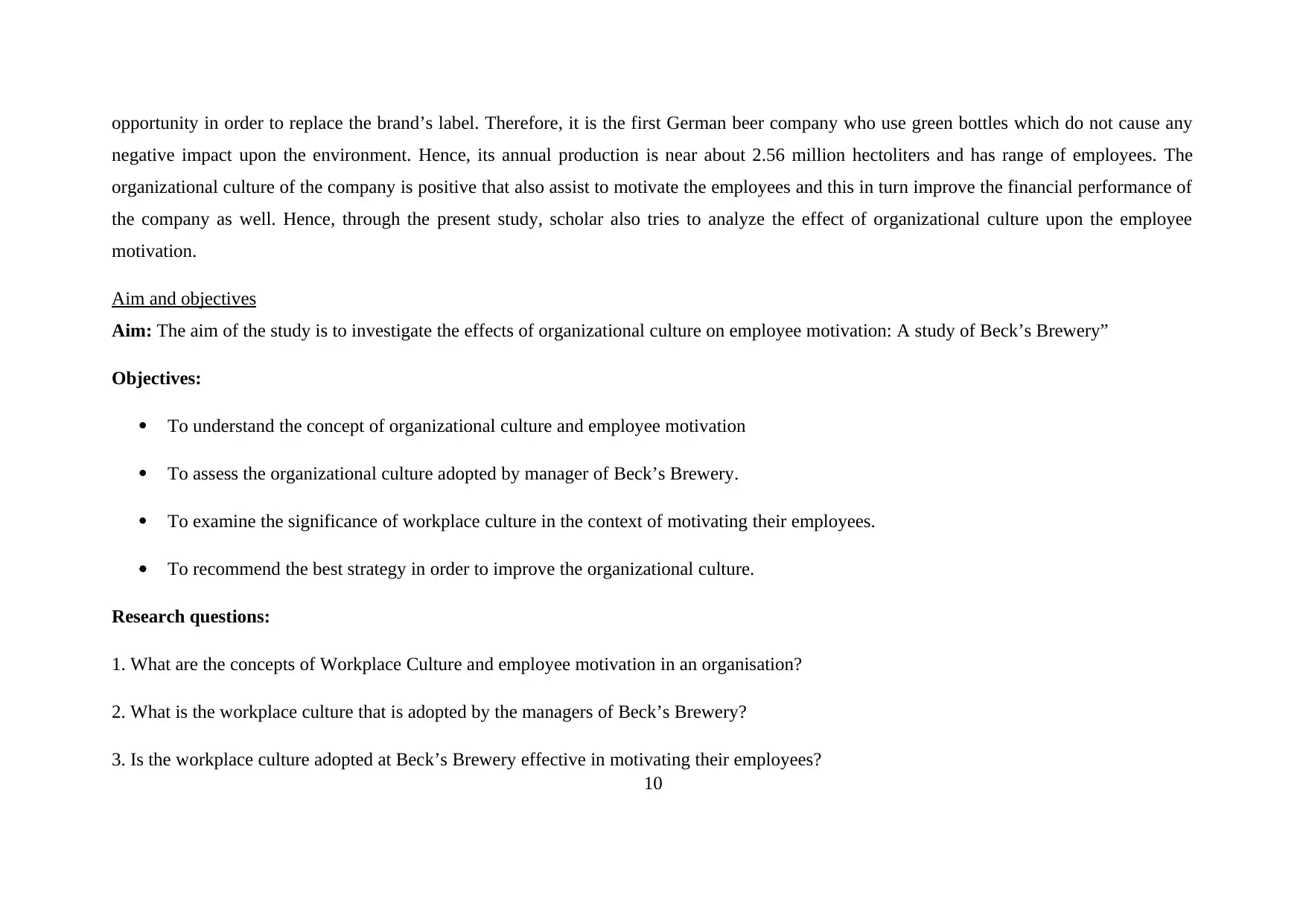
opportunity in order to replace the brand’s label. Therefore, it is the first German beer company who use green bottles which do not cause any
negative impact upon the environment. Hence, its annual production is near about 2.56 million hectoliters and has range of employees. The
organizational culture of the company is positive that also assist to motivate the employees and this in turn improve the financial performance of
the company as well. Hence, through the present study, scholar also tries to analyze the effect of organizational culture upon the employee
motivation.
Aim and objectives
Aim: The aim of the study is to investigate the effects of organizational culture on employee motivation: A study of Beck’s Brewery”
Objectives:
To understand the concept of organizational culture and employee motivation
To assess the organizational culture adopted by manager of Beck’s Brewery.
To examine the significance of workplace culture in the context of motivating their employees.
To recommend the best strategy in order to improve the organizational culture.
Research questions:
1. What are the concepts of Workplace Culture and employee motivation in an organisation?
2. What is the workplace culture that is adopted by the managers of Beck’s Brewery?
3. Is the workplace culture adopted at Beck’s Brewery effective in motivating their employees?
10
negative impact upon the environment. Hence, its annual production is near about 2.56 million hectoliters and has range of employees. The
organizational culture of the company is positive that also assist to motivate the employees and this in turn improve the financial performance of
the company as well. Hence, through the present study, scholar also tries to analyze the effect of organizational culture upon the employee
motivation.
Aim and objectives
Aim: The aim of the study is to investigate the effects of organizational culture on employee motivation: A study of Beck’s Brewery”
Objectives:
To understand the concept of organizational culture and employee motivation
To assess the organizational culture adopted by manager of Beck’s Brewery.
To examine the significance of workplace culture in the context of motivating their employees.
To recommend the best strategy in order to improve the organizational culture.
Research questions:
1. What are the concepts of Workplace Culture and employee motivation in an organisation?
2. What is the workplace culture that is adopted by the managers of Beck’s Brewery?
3. Is the workplace culture adopted at Beck’s Brewery effective in motivating their employees?
10
Paraphrase This Document
Need a fresh take? Get an instant paraphrase of this document with our AI Paraphraser
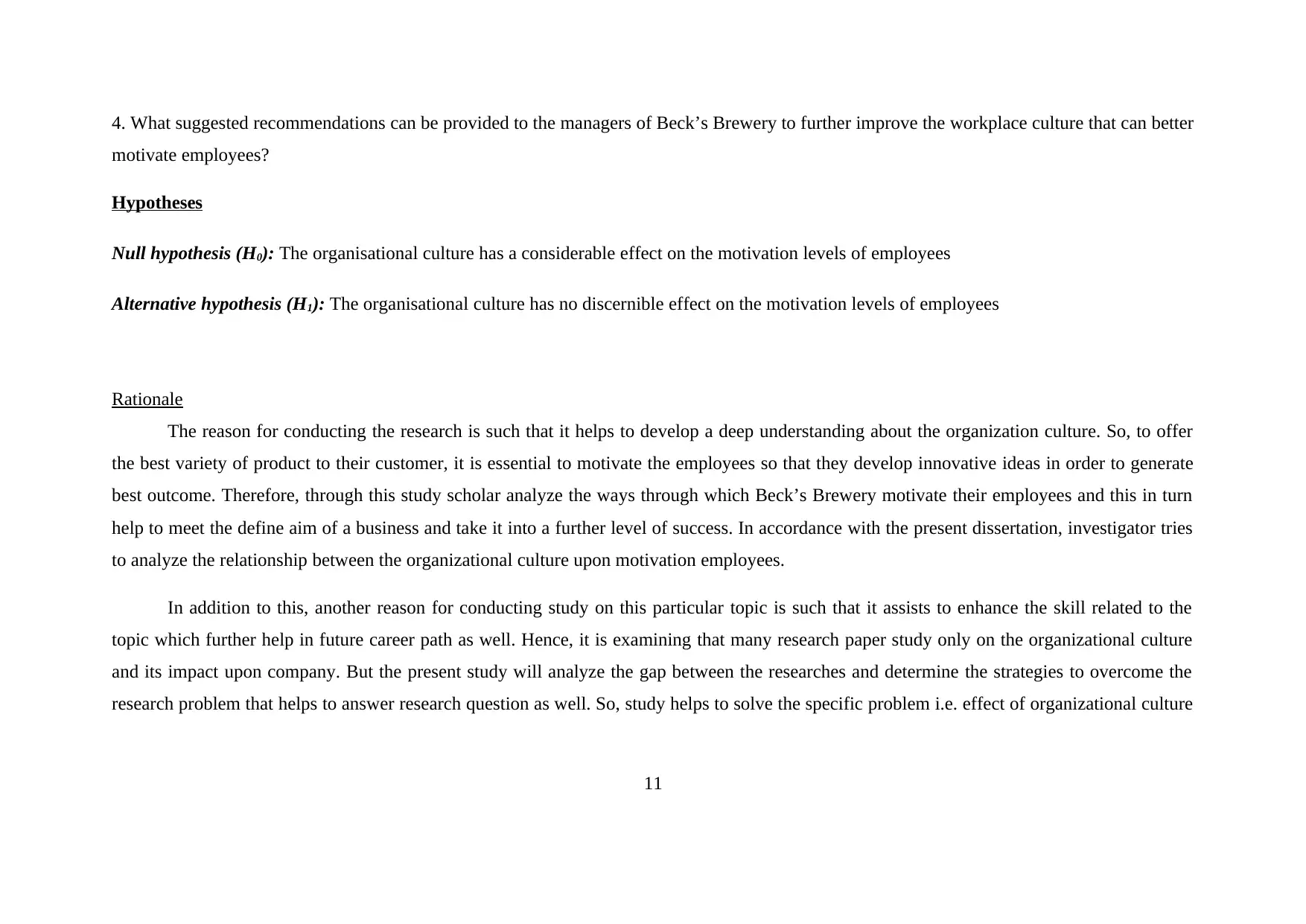
4. What suggested recommendations can be provided to the managers of Beck’s Brewery to further improve the workplace culture that can better
motivate employees?
Hypotheses
Null hypothesis (H0): The organisational culture has a considerable effect on the motivation levels of employees
Alternative hypothesis (H1): The organisational culture has no discernible effect on the motivation levels of employees
Rationale
The reason for conducting the research is such that it helps to develop a deep understanding about the organization culture. So, to offer
the best variety of product to their customer, it is essential to motivate the employees so that they develop innovative ideas in order to generate
best outcome. Therefore, through this study scholar analyze the ways through which Beck’s Brewery motivate their employees and this in turn
help to meet the define aim of a business and take it into a further level of success. In accordance with the present dissertation, investigator tries
to analyze the relationship between the organizational culture upon motivation employees.
In addition to this, another reason for conducting study on this particular topic is such that it assists to enhance the skill related to the
topic which further help in future career path as well. Hence, it is examining that many research paper study only on the organizational culture
and its impact upon company. But the present study will analyze the gap between the researches and determine the strategies to overcome the
research problem that helps to answer research question as well. So, study helps to solve the specific problem i.e. effect of organizational culture
11
motivate employees?
Hypotheses
Null hypothesis (H0): The organisational culture has a considerable effect on the motivation levels of employees
Alternative hypothesis (H1): The organisational culture has no discernible effect on the motivation levels of employees
Rationale
The reason for conducting the research is such that it helps to develop a deep understanding about the organization culture. So, to offer
the best variety of product to their customer, it is essential to motivate the employees so that they develop innovative ideas in order to generate
best outcome. Therefore, through this study scholar analyze the ways through which Beck’s Brewery motivate their employees and this in turn
help to meet the define aim of a business and take it into a further level of success. In accordance with the present dissertation, investigator tries
to analyze the relationship between the organizational culture upon motivation employees.
In addition to this, another reason for conducting study on this particular topic is such that it assists to enhance the skill related to the
topic which further help in future career path as well. Hence, it is examining that many research paper study only on the organizational culture
and its impact upon company. But the present study will analyze the gap between the researches and determine the strategies to overcome the
research problem that helps to answer research question as well. So, study helps to solve the specific problem i.e. effect of organizational culture
11
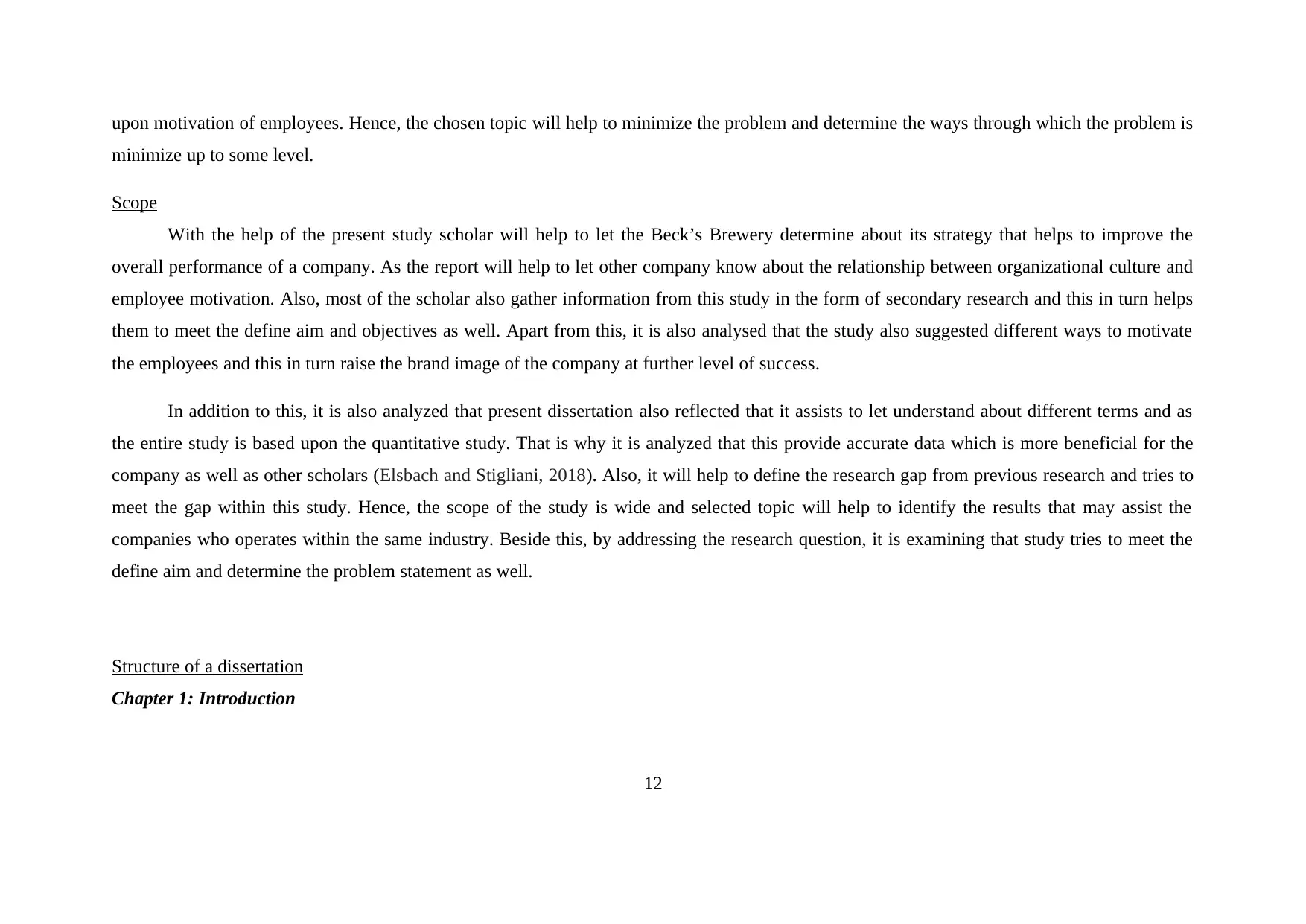
upon motivation of employees. Hence, the chosen topic will help to minimize the problem and determine the ways through which the problem is
minimize up to some level.
Scope
With the help of the present study scholar will help to let the Beck’s Brewery determine about its strategy that helps to improve the
overall performance of a company. As the report will help to let other company know about the relationship between organizational culture and
employee motivation. Also, most of the scholar also gather information from this study in the form of secondary research and this in turn helps
them to meet the define aim and objectives as well. Apart from this, it is also analysed that the study also suggested different ways to motivate
the employees and this in turn raise the brand image of the company at further level of success.
In addition to this, it is also analyzed that present dissertation also reflected that it assists to let understand about different terms and as
the entire study is based upon the quantitative study. That is why it is analyzed that this provide accurate data which is more beneficial for the
company as well as other scholars (Elsbach and Stigliani, 2018). Also, it will help to define the research gap from previous research and tries to
meet the gap within this study. Hence, the scope of the study is wide and selected topic will help to identify the results that may assist the
companies who operates within the same industry. Beside this, by addressing the research question, it is examining that study tries to meet the
define aim and determine the problem statement as well.
Structure of a dissertation
Chapter 1: Introduction
12
minimize up to some level.
Scope
With the help of the present study scholar will help to let the Beck’s Brewery determine about its strategy that helps to improve the
overall performance of a company. As the report will help to let other company know about the relationship between organizational culture and
employee motivation. Also, most of the scholar also gather information from this study in the form of secondary research and this in turn helps
them to meet the define aim and objectives as well. Apart from this, it is also analysed that the study also suggested different ways to motivate
the employees and this in turn raise the brand image of the company at further level of success.
In addition to this, it is also analyzed that present dissertation also reflected that it assists to let understand about different terms and as
the entire study is based upon the quantitative study. That is why it is analyzed that this provide accurate data which is more beneficial for the
company as well as other scholars (Elsbach and Stigliani, 2018). Also, it will help to define the research gap from previous research and tries to
meet the gap within this study. Hence, the scope of the study is wide and selected topic will help to identify the results that may assist the
companies who operates within the same industry. Beside this, by addressing the research question, it is examining that study tries to meet the
define aim and determine the problem statement as well.
Structure of a dissertation
Chapter 1: Introduction
12
⊘ This is a preview!⊘
Do you want full access?
Subscribe today to unlock all pages.

Trusted by 1+ million students worldwide
1 out of 89
Related Documents
Your All-in-One AI-Powered Toolkit for Academic Success.
+13062052269
info@desklib.com
Available 24*7 on WhatsApp / Email
![[object Object]](/_next/static/media/star-bottom.7253800d.svg)
Unlock your academic potential
Copyright © 2020–2025 A2Z Services. All Rights Reserved. Developed and managed by ZUCOL.





